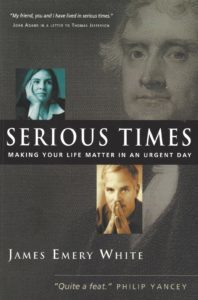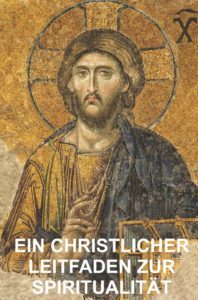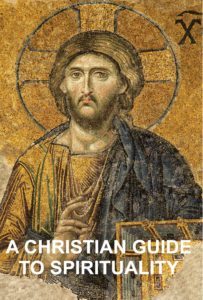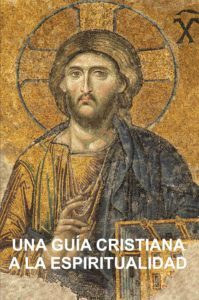Stephen W. Hiemstra's Blog, page 132
January 24, 2021
Gebetstag 10
Von Stephen W. Hiemstra
Liebender Vater, geliebter Sohn, Heiliger Geist.
Wir preisen dich dafür, da𝛽 du dich mit uns in der Person Jesu von Nazareth teilen und in die Geschichte eintreten.
Dein stilles Leiden am Kreuz ruft deine Liebe in unsere gefallene Welt.
Danke dir, da𝛽 du ein perfektes Leben modelliere; unsere Sünden am Kreuz tragen; und uns Auferstehungsfrieden gewähren.
In Jesu Namen, Amen.
Gebetstag 10
Siehe auch:
Glaubens Gebet
Andere Möglichkeiten, sich online zu engagieren:
Autoren Seite: http://www.StephenWHiemstra.net
Herausgeber Seite: http://www.T2Pneuma.com
Mitteilungsblatt: https://bit.ly/Begone_2021
The post Gebetstag 10 appeared first on T2Pneuma.net.
January 22, 2021
Suffering
“He suffered under Pontius Pilate, was crucified, died, and was buried.”Ω
By Stephen W. Hiemstra
Why do we care about Christ’s suffering on the cross?
The Apostle Peter said it best: “By his wounds you have been healed.” (1 Pet 2:24; Rom 5:6)
The Jewish authorities said that Jesus claimed to be a king, charged Jesus with sedition (Mark 15:2), and sentenced him to crucifixion, the penalty for sedition (John 19:19). In fact, Jesus was a king (messiah) in the Jewish sense, but not a king (political rival) in a Roman sense. For this reason, the Roman Governor Pontius Pilate cross examined Jesus publicly and concluded: “I find no guilt in him.” (John 19:4)
Jesus’ link to Pontius Pilate underscores the credibility of his innocent suffering. Even by Roman standards, Pilate was corrupt and brutal. Pilate had Jesus both flogged and crucified solely to satisfy the blood lust of a crowd (Josephus 2009, 3.1). By contrast, when the Apostle Paul found himself charged with profaning the temple only a few years later, another governor, Porcius Festus, simply kept him locked up for two years (Acts 24:6-27). Interestingly, Pilate links Jesus to a person known by historians outside the biblical text. Not only is Pilate mentioned in Josephus, an inscription bearing the phrase “Pontius Pilate Prefect of Judea” was found in 1961 in the excavation of a theatre in Caesarea (Zondervan 2005, 1714).
Jesus’ death on the cross underscores his extreme suffering. The Romans devised crucifixion as a method of execution by torture—it amplified the suffering inflicted. It was a slow, painful death. Crucifixion was so horrific that Roman law forbade Roman citizens from being crucified.
In Jewish tradition, death on the cross meant that one was cursed by God (Deut 21:22-23). This is what Paul meant when he wrote: “Christ redeemed us from the curse of the law by becoming a curse for us— for it is written, cursed is everyone who is hanged on a tree.” (Gal 3:13) The implication was that the crime committed was so horrible that the person deserved not only death but also eternal damnation. Jesus’ burial reinforced this point.
Burial behind a stone assured that Jesus was truly dead, as the death of Absalom illustrates. Absalom rebelled against his father, King David, and raised an army to over-throw him. He was captured because his hair got caught in a tree which led to the belief that he was cursed by God. David’s commander, Joab, had Absalom publicly executed, buried in a pit, and covered with stones (2 Sam 18:10-18).
Because Jesus was sinless and remained innocent, even in death, he became the only sinless person to live after Adam (Heb 4:15). Unlike Adam, Jesus, whose sinless life came to an abrupt end, never gave into temptation. In death, he was accordingly a perfect (without defeat or blemish) sin offering (Lev 4:22-24). In dying, Jesus became the Second Adam, reversing the curse of death, as validated by his resurrection (1 Cor 15:21-22).
In the same way that the holy conception confirms Jesus’ divinity and establishes credibility with God, Jesus’ innocent suffering on the cross confirms his humanity and status as God’s chosen sacrifice for our sins.
References
Zondervan. 2005. NIV Archaeological Study Bible: An Illustrated Walk Through Biblical History and Culture. Grand Rapids, MI: Zondervan.
Suffering
Also see:
Preface to A Christian Guide to Spirituality
Other ways to engage online:
Author site: http://www.StephenWHiemstra.net
Purchase Book: http://www.T2Pneuma.com
Newsletter: https://bit.ly/Begone_2021
The post Suffering appeared first on T2Pneuma.net.
Sufrimiento
“padeció bajo el poder de Poncio Pilato; fue crucificado, muerto, y sepultado”[1]
Por Stephen W. Hiemstra
¿Por qué nos preocupamos por el sufrimiento de Cristo en la cruz?
El Apostól Pedro lo dijo mejor: “porque por Sus heridas fueron ustedes sanados.” (1 Peter 2:24 NBH) [2] Los autoridades Judías dijeron que Jesús afirmó a ser un rey y acusaron Jesús de sedición (Mark 15:2) [3]. De hecho, Jesús era un rey (mesías) en el sentido Judía, pero no era un rey (competidor politico) en el sentido Romano. Por esta razón, el Governador Romano Poncio Pilato examinó Jesus públicamente y concluyó: “no encuentro ningún delito en El.” (John 19:4 NBH)
La relacion entre Jesus y Pontius Pilate subrayó la credibilidad de su sufrimiento inocente ya que, incluso para las normas Romanas, Pilate era corrupto y brutal—Pilate habia Jesus azotado y crucificado solamente para satisfacer la sed de sangre de un multitud [4]. La relación con Pilato también vincula Jesus (y el credo de los Apóstoles) a una personaje histórico conocido. No sólo es Pilate mencióna en Josefo, una inscripcion que lleva la frase “Pontius Pilate prefecto de Judea” fue encontrada en 1961 en una exclavacion de un teatro en Caesarea [5].
La muerte de Jesus por la cruz subraya su sufrimiento extremo. Los Romanos idean crucifixión como un metodo de ejecución por la tortura—la amplificó el sufrimiento infligió. Era una muerte lenta y dolorosa. Crucifixión era tan horrible que la ley Romana prohibía la crucifixión de los ciudadanos Romano.
En la tradición Judea, muerte por una cruz significaba que alguno era maldicho de Dios [6]. Este lo significaba Pablo cuando escritó: “Cristo nos redimió de la maldición de la Ley, habiéndose hecho maldición por nosotros, porque escrito está:“MALDITO TODO EL QUE CUELGA DE UN MADERO,” (Gal 3:13 NBH) [7]. Se implica que el crimen cometido era tan horrible que la persona merecido no sólo muerte, pero maldición eternal también. Entierro detras un piedra garantizó que Jesús fue muerto verdaderamente [8].
Debido que Jesús era sin pecados y quedó inocente, incluso en muerto, era la única persona sin pecados que vivir después Adán (Heb 4:15). No como Adán, Jesús, cuya vida sin pecados venia hasta un termino abrupta, nunca cayó en tentación. En muerte, era un ofrenda perfecta (sin conocer la derrota ni defecto) para pecados (Lev 4:22-24). De hecho, Jesús era el Segundo Adán, que reversó el maldición de muerte, como validado por su resurrección (1 Cor 15:21-22).
De la misma manera que la Concepción Inmaculada confirma la divinidad de Jesus y establece credibildad con Dios, la sufrimiento de Jesús por la cruz confirma su humanidad y su condición de sacrificio elegido de Dios por nuestros pecados.
Notas
[1] Iglesia Presbiteriana (E.U.A.) 2009. El Libro de Adoración. Preparado por la Oficina de Teología y Adoración. Louisville, KY: Geneva Press. Pagina 35.
[2] Asimismo el Apostól Pablo escritó: “Porque mientras aún éramos débiles, a su tiempo Cristo murió por los impíos.” (Rom 5:6 NBH)
[3] Crucifixión era la pena por sedición—rebelión contra el estado Romano. La inscripcion que Pilate puso por la cruz encima Jesús leido en Latín: “Iesus Nazarenus rex Iudaeorum” (John 19:19 VUL). Por lo general, se registra con el acrónimo, INRI, y traduce como Jesus de Nazaret, Rey de los Judios.
[4] Por lo contrario, cuando el Apostól Pablo se encontro acusado de profanar el temple solamente pocos años mas tarde, un otro governador, Porcio Festo, simplemente lo encarceladó por dos años (Acts 24:6, 27). Historiador judío del siglo primero Josefo (AD 38-100) escritó algunos cuentas de Pilate que lo mostró como cruel (Josefo 2009, 3.1)
[5] Pilate era prefecto Romano de los años 26 a 36 (Zondervan 2005, 1714).
[6] Deut 21:22–23.
[7] También vea: Acts 5:30, 10:39, and 13:29; 1 Pet 2:24.
[8] La cuenta de la muerte de Absalón ilustra esta punta. Absalón rebeló contra su padre, el Rey David, y levantó un ejército para sobre le tirar. Cuando su cabello se enredó en un arbol, era considerado maldito de Dios. Por orden de la comandante de David, Joab, Absalón fue públicamente ejecutado, enterrado en un hoyo, y cubierto con piedras (2 Sam 18:10-18).
Referencias
Zondervan. 2005. NIV Archaeological Study Bible: An Illustrated Walk Through Biblical History and Culture. Grand Rapids, MI: Zondervan.
Sufrimiento
Ver también:
Prefacio de La Guía Cristiana a la Espiritualidad
Otras formas de participar en línea:
Sitio del autor: http://www.StephenWHiemstra.net
Comprar Libro: http://www.T2Pneuma.com
Boletín informativo: https://bit.ly/Begone_2021
The post Sufrimiento appeared first on T2Pneuma.net.
Leidend
Von Stephen W. Hiemstra
“Gelitten unter Pontius Pilatus, gekreuzigt, gestorben und begraben.” Ω
Warum kümmern wir uns um das Leiden Christi am Kreuz?
Der Apostel Petrus sagte es am Besten: “Durch seine Wunden seid ihr heil geworden.” (1 Pet 2:24; Rom 5:6)
Die jüdischen Behörden sagten, da𝛽 Jesus behauptete, ein König zu sein, beschuldigte Jesus des Aufruhrs (Mark 15: 2), und verurteilte ihn zur Kreuzigung, der Strafe für Aufruhr (John 19:19). Tatsächlich war Jesus ein König (Messias) im jüdischen Sinne, aber kein König (politischer Rivale) im römischen Sinne. Aus diesem Grund, Pontius Pilatus, der römischen Gouverneur war, untersuchte Jesus öffentlich und beurteilte: “Ich keine Schuld an ihm finde.” (John 19:4)
Die Verbindung Jesu zu Pontius Pilatus unterstreicht die Glaubwürdigkeit seines unschuldigen Leidens. Auch nach römischen Maßstäben war Pilatus korrupt und brutal. Pilatus ließ Jesus nur auspeitschen und kreuzigen, nur um die Blutlust einer Menschenmenge zu befriedigen (Josephus 2009, 3.1). Zum Kontrast, als der Apostel Paulus nur wenige Jahre später beschuldigt wurde, den Tempel entweiht zu haben, hielt ihn ein anderer Gouverneur, Porcius Festus, einfach zwei Jahre lang eingesperrt (Acts 24:6-27). Interessanterweise verbindet Pilatus Jesus mit einem Mensch, der Historikern außerhalb des biblischen Textes bekannt ist. Pilatus wird nicht nur in Josephus erwähnt, eine Inschrift mit dem Satz “Präfekt Pontius Pilatus von Judäa“ wurde 1961 bei der Ausgrabung eines Theaters in Cäsarea gefunden (Zondervan 2005, 1714). Der Tod Jesu am Kreuz unterstreicht sein starkes Leiden. Die Römer entwickelten die Kreuzigung als eine Methode der Hinrichtung durch Folter, die das verursachte Leiden verstärkte. Die war ein langsamer, schmerzhafter Tod. Die Kreuzigung war so schrecklich, da𝛽 das römische Gesetz den römischen Bürgern gekreuzigt werden verbot.
In der jüdischen Tradition, ein Tod am Kreuz bedeutete da𝛽 man bei Gott verflucht (Deut 21:22-23). Das meinte Paulus, als er schrieb: “Christus aber hat uns losgekauft von dem Fluch des Gesetzes, da er zum Fluch wurde für uns – denn es steht geschrieben: Verflucht ist jeder, der am Holz hängt.” (Gal 3:13) Die Implikation war, dass das begangene Verbrechen so schrecklich war, da𝛽 die Person nicht nur den Tod, sondern auch die ewige Verdammnis verdient. Das Begräbnis Jesu verstärkte diese Verständnis.
Die Beerdigung hinter einem Stein versicherte, da𝛽 Jesus wirklich tot war, wie der Tod von Absalom zeigt. Absalom lehnte sich gegen seinen Vater, König David, auf und stellte eine Armee auf, um ihn zu überwerfen. Er wurde gefangen genommen, weil seine Haare in einem Eiche verheddert werden, was zu dem Glauben führte, da𝛽 er von Gott verflucht wurde. Davids Kommandant Joab ließ Absalom öffentlich hinrichten, in einer Grube begraben und mit Steinen bedecken (2 Sam 18:10-18).
Weil Jesus ohne Sünde war und selbst im Tod unschuldig blieb, wurde er der einzige Mensch ohne Sünde, der nach Adam lebte (Heb 4:15). Im Gegensatz zu Adam gab Jesus, dessen sündloses Leben abrupt zu Ende ging, niemals der Versuchung nach. Im Tod war er dementsprechend ein perfektes (ohne Niederlage oder Makel) Sündopfer (Lev 4:22-24). Im Sterben wurde Jesus der zweite Adam und kehrte den Fluch des Todes um, wie seine Auferstehung bestätigt (1 Cor 15:21-22).
So wie die heilige Empfängnis die Göttlichkeit Jesu bestätigt und Glaubwürdigkeit gegenüber Gott begründet, bestätigt das unschuldige Leiden Jesu am Kreuz seine Menschlichkeit und seinen Status als von Gott auserwähltes Opfer für unsere Sünden.
Verweise
Zondervan. 2005. NIV Archaeological Study Bible: An Illustrated Walk Through Biblical History and Culture. Grand Rapids, MI: Zondervan.
Leidend
Siehe auch:
Einleitung auf Ein Christlicher Leitfaden zur Spiritualität
Andere Möglichkeiten, sich online zu engagieren:
Autoren Seite: http://www.StephenWHiemstra.net
Herausgeber Seite: http://www.T2Pneuma.com
Mitteilungsblatt: https://bit.ly/Begone_2021
The post Leidend appeared first on T2Pneuma.net.
January 19, 2021
White: The Second Fall

James Emery White. 2004. Serious Times: Making Your Life Matter in an Urgent Day. Downers Grove.
Review by Stephen W. Hiemstra
Walking through the bookstore at Gordon Conwell Theological Seminary [1] in Charlotte, NC a book by James Emery White caught my eye. The title was: Serious Times: Making Your Life Matter in an Urgent Day. Being a serious guy, I bought a copy.
White begins with a proposition: mankind has suffered not one but two falls. The first fall occurred when God expelled Adam and Eve from the Garden of Eden. A second fall occurred when modern society turned its back on all notions of transcendence, including God (18). The mantra of the naturalist has become the watchword of the age: nature is all that there is. If it cannot be empirically verified, it does not exist (47). By the processes of secularization, privatization, and pluralization, White argues that we have come to a time when Christianity is treated as a preference fit for private discussion only within the walls of one’s own house.
White’s book is organized into 7 chapters:
The Second Fall,The World that Lives in Us,The City of Dreadful Delight,Deeping Our Souls,Developing Our Minds,Answering the Call, andAligning with the Church.He apologizes up front for writing a mile wide and an inch deep (15). He need not have apologized: the hardest part of problem solving is arriving at a clear definition of the problem. For White, spiritual anemia (78) is the pressing problem of our age. We are lukewarm in our faith, in part, because we do not know what we believe. To deal with this problem, White commends the spiritual disciples of prayer, study, and worship.
Of these, the most interesting is worship because he views each Christian as called to treat his vocation as an act of worship. White writes: The Reformation idea of vocation follows from the monastic vision. Luther, himself a monk, was clearly familiar with the monastic conviction that all tasks needed to be offered as worship of the living God (116). This view flies in the face of society’s picture of worship as a Sunday morning activity confined within the walls of a church. Rather than being religious entertainment, worship defines who we are. Here is our identity in Christ.
Christ calls us to ask a question of every moment of every day: to what purpose has God called me to this particular time and place? In the words of the Apostle Paul: Whatever you do, work at it with all your heart, as working for the Lord, not for men (Colossians 3:23). If we answer this call, every moment of every day has purpose. If God is present in our lives, we can perform a ministry of presence in the lives of those around us.
A writer’s packaging matters. Even if a writer rambles a bit, my rule of thumb is that a book is worth the time if I find myself quoting from the book and applying its lessons in my life. Two passages from Serious Times come to mind.
In the first passage, White cites a story by Walter Truett Anderson (57) that is helpful in highlighting the distinctions among modernists, postmodernists, and deconstructionists—three important worldviews today.
Three umpires have a beer at the end of the day. The first one says: there are balls and strikes and I call them the way they are. The second one says: there are balls and strikes and I call them the way I see them. The third one says there are balls and strikes and they are not anything until I call them. The first umpire is a modernist who believes in (unconditioned) objective reality. The second umpire is a postmodernist who believe that reality is conditioned on our perspective of it. The third umpire is a deconstructionist that believes that reality is conditioned on who is in charge.
This story sticks in my mind because I can put faces to each of these umpires.
The second passage is his highlighting of the broken glass theory of criminologists James O. Wilson and George Kelling (158) [2]. The idea is that crime is contagious. It starts with a broken window and spreads to an entire community. Cleaning up trash, graffiti, and broken windows and minor violations of law, New York City substantially reduced crime in the 1980s. For those of us who grew up scared to walk the streets of New York, this reduction in crime was a big deal. After reading White’s account I suddenly found ammunition to argue for cleaner kid’s rooms in my household and greater attention to detail in the office downtown. The broken glass theory has a familiar ring: I am the LORD who brought you up out of Egypt to be your God; therefore be holy, because I am holy (Leviticus 11:45). Small stuff matters.
Serious Times helped define my writing focus on Christian spirituality over the past seven years. It is a serious read for serious people.
Footnotes[2] http://en.wikipedia.org/wiki/Broken_w....
White: The Second FallAlso See:Books, Films, and MinistryOther ways to engage online:Author site: http://www.StephenWHiemstra.netPublisher site: http://www.T2Pneuma.com Newsletter: https://bit.ly/Begone_2021
The post White: The Second Fall appeared first on T2Pneuma.net.
January 18, 2021
Open Letter to Our President-Elect, Joe Biden
By Stephen W. Hiemstra
Congratulations on winning a uniquely difficult election campaign. You are now to become the 46th President of the United States and spokesman for the free world, all of it. May God be with you and bless you so that you may bless many others.
I like how you openly attend church on Sundays. I endorse your efforts to create public space for moderate politicians. I like the tone that you have adopted in your public speaking.
ElectionFor the first time in my adult life, however, I did not vote in November.
On the one hand, I was concerned about the tone of the rhetoric; on the other, I was concerned about the slow march into socialism. Neither serve our country well.
About 80 percent of Americans left behind economically over the past 30 years. The obsession with identity politics diverts attention to the problem that Washington primarily serves corporate interests and accentuates class differences. The pandemic has accelerated this process.
EconomicsEconomically our country has championed free trade that has led to an economic boom that has lifted many boats. This is very good. The new challenge, however, is: how do we compete successfully in a world economy where everyone pays the same price? (Law of one price)
Two answers stand out: Education and common rules.
Education. We need to invest in education that raises our productivity. It is not enough to have a degree marking us as educated or to accumulate interesting facts about our world. Productivity is the driver of our standard of living, not the certificates that we decorate our walls with. We spend more on education than other countries, but we do not get a good return on our investment. Personal disciple matters–public schools cannot continue to graduate students that routinely require remedial education when they enter college.
Common rules. When everyone receives the same price for traded goods and services, we need to agree with other countries on how to pay for health care, worker protections, government services, and what environmental rules will be honored by everyone. This is not easy, but it is unfair to have trade advantages due to poor choices on any of these items.
Healthcare is a special concern for the United States, not just because of the corona virus pandemic. We pay too much for healthcare and receive too little value for the money spent. Being tied to employment, it raises our cost of production, reducing our competitiveness. The stranglehold that healthcare providers have on our political process points to the problem of corporate influence and the need for political reform.
ChallengesSeveral challenges have arisen as some have advanced novel programs in recent months.Three big ticket items stand out: global warming, student debt relief, and concern about race.
Global warming. There is little dispute that world temperatures are rising and causing problems. I often point to the opening of the northwest passage in recent years as an obvious indicator. The real controversy is whether we can do much of anything about it in a short period of time–the human factor. Reasonable policies to encourage energy conservation and abate pollution are great (I drive a Prius). Cutting production of shell-oil extraction is a bad idea both economically and politically–low oil prices restrain the military expansion of key U.S. competitors.
Student debt relief. The student debt crisis is more an indication of a falling standard of living in America and excess capacity in higher education than a specific problem with debt. Increasing federal involvement in higher education is likely to lower educational standards, increase unionization, and reduce our national competitiveness. Forgiving student debt will bail out failing colleges and encourage additional spending on unproductive education, like pushing poorly prepared and poorly motivated students to attend college.
Concern about race. Clearly, we have issues on race. We can do better. The bigger issue, however, is class. The individuals left behind in the inner cities look an awful lot like the individuals left behind in our rural areas. Favoring one group over the other by focusing on race and ethnicity can only divide us. A better idea is to improve national standards (and spending) on education and policing.
ClosingMy prayer for you is that you will learn to listen, especially to your critics. The president’s job is undoable without the support of many, many helpers. God gave us two ears, but only one mouth, for a reason: Listen. Listen patiently. Listen until it hurts.
Start by listening to God. Begin and end the day in prayer in the privacy of your home. Pray for understanding; pray while you are eating; pray while you are working out; pray while you are deliberating; pray for those you do not understand; pray with your family. As president, the one person who you can always trust is God—look to Christ for your example; ask the Holy Spirit for guidance, protection, and peace.
Listen to those who have gone before you. Invite the living presidents to Camp David on a regular basis for quiet time and reflection. Ask their guidance; apply it when appropriate; gain their trust; and ask for their support.
Listen to the American people. Appoint a diverse cabinet. Follow Reagan’s lead and delegate responsibility to leave time to focus on key priorities. Take Lincoln’s lead and invite your most able critics into your administration to learn from them and give them a reason to support you. Vanquish your enemies by making them your friends.
May God be with you and bless you so that you may bless many others.
Open Letter to Our President-Elect, Joe BidenThe post Open Letter to Our President-Elect, Joe Biden appeared first on T2Pneuma.net.
Conception: Monday Monologues (podcast) January 18, 2021
 Ken Burtram Photography
Ken Burtram PhotographyBy Stephen W. Hiemstra
This morning I will share a prayer and reflect on Conception. After listening, please click here to take a brief listener survey (10 questions).
To listen, click on this link.
Hear the words; Walk the steps; Experience the joy!
Conception: Monday Monologues (podcast) January 18, 2021
Also see:
Monday Monologue On March 26, 2018
Other ways to engage online:
Author site: http://www.StephenWHiemstra.net,
Publisher site: http://www.T2Pneuma.com.
Newsletter: https://bit.ly/Begone_2021
The post Conception: Monday Monologues (podcast) January 18, 2021 appeared first on T2Pneuma.net.
January 17, 2021
Prayer Day 9
 By Stephen W. Hiemstra
By Stephen W. HiemstraGod of all wonders.
We praise you for Mary’s faithfulness and Jesus’ miraculous birth.
Bridge the gaps of holiness, time, and space between us.
Open our minds to the miracles that we experience daily but neglect to think about.
Open our hearts to accept your will for our lives.
In the name of the Father, the Son, and the Holy Spirit, Amen.
Prayer Day 9
Also see:
Believer’s Prayer
Other ways to engage online:
Author site: http://www.StephenWHiemstra.net
Purchase Book: http://www.T2Pneuma.com
Newsletter: https://bit.ly/Begone_2021
The post Prayer Day 9 appeared first on T2Pneuma.net.
Oración Dia 9
Por Stephen W. Hiemstra
Dios de todas las maravillosas.
Te alabamos por la fidelidad de María y el nacimiento milagroso de Jesús.
Puente la brecha de santidad, tiempo, y espacio entre nosotros.
Abre nuestra mentes a los milagrosos que experimentamos cotidiana pero se olvidan de considerar.
Abre nuestros corazones a aceptar tu voluntad por nuestras vidas.
En el nombre del Padre, el Hijo, y el Espíritu Santo, Amén.
Oración Dia 9
Ver también:
Gospel as Divine Template
Otras formas de participar en línea:
Sitio del autor: http://www.StephenWHiemstra.net,
Comprar Libro: http://www.T2Pneuma.com.
Boletín informativo: https://bit.ly/Begone_2021
The post Oración Dia 9 appeared first on T2Pneuma.net.
Gebetstag 9
Von Stephen W. Hiemstra
Gott aller Wunder,
Wir preisen dich für die Treue Marias und die wundersame Geburt Jesu.
Überbrücke die Lücken von Heiligkeit, Zeit und Raum zwischen uns.
Öffne unseren Geist an die Wunder, die wir tägliche erleben, aber nachlässigen nachzudenken.
Öffne unsere Herzen, um deinen Willen für unser Leben anzunehmen.
Im Namen des Vaters, des Sohnes und des Heiligen Geistes, Amen.
Gebetstag 9
Siehe auch:
Glaubens Gebet
Andere Möglichkeiten, sich online zu engagieren:
Autoren Seite: http://www.StephenWHiemstra.net
Herausgeber Seite: http://www.T2Pneuma.com
Mitteilungsblatt: https://bit.ly/Begone_2021
The post Gebetstag 9 appeared first on T2Pneuma.net.







